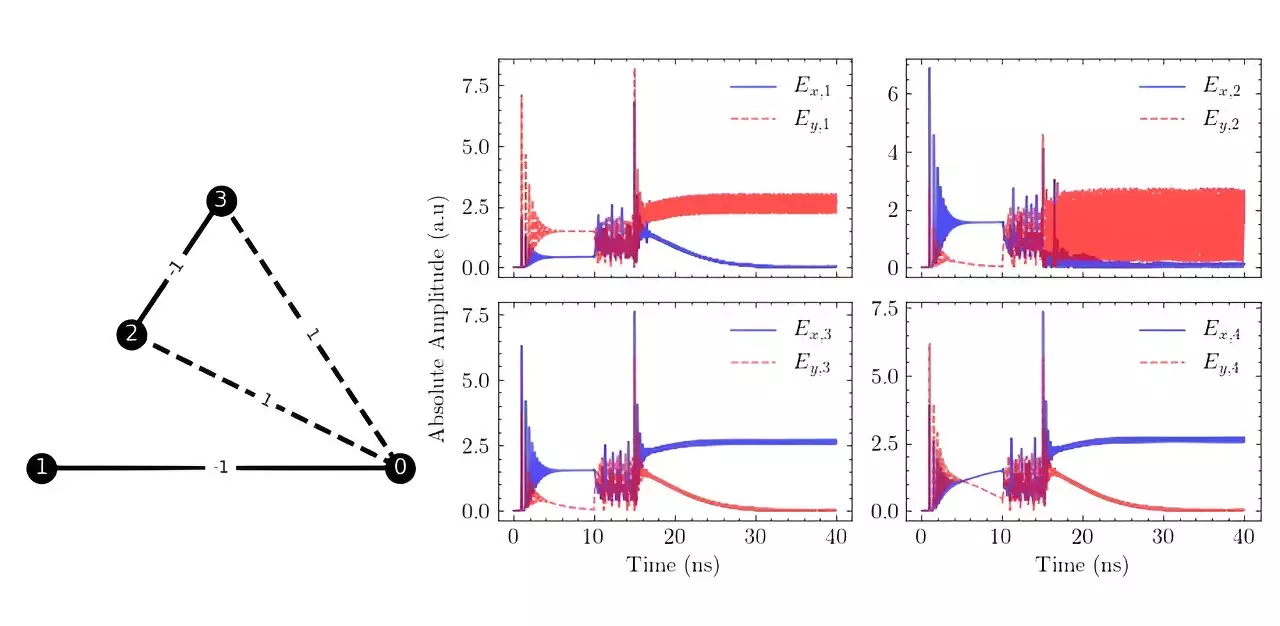In today’s data-driven world, the efficiency of solving complex problems is more important than ever before. Traditional computers often face challenges when dealing with a large number of interacting variables, resulting in inefficiencies such as the von Neumann bottleneck. However, a new approach to computing known as collective state computing has emerged to tackle this issue by mapping optimization problems onto the Ising problem in magnetism.
Collective state computing involves representing a problem as a graph, where nodes are connected by edges. Each node can be in one of two states, either +1 or -1, which represent potential solutions to the problem. The goal is to find the configuration that minimizes the total energy of the system based on a concept known as a Hamiltonian. Researchers are exploring physical systems that can outperform traditional computers in efficiently solving the Ising Hamiltonian.
One promising approach in collective state computing involves utilizing light-based techniques to encode information into properties like polarization state, phase, or amplitude. By leveraging effects such as interference and optical feedback, these systems can quickly find the correct solution to complex problems. A recent study published in the Journal of Optical Microsystems by researchers from the National University of Singapore and the Agency for Science, Technology, and Research looked at using vertical-cavity surface-emitting lasers (VCSELs) to solve Ising problems.
In the experimental setup, information is encoded in the linear polarization states of the VCSELs, with each state corresponding to a potential solution to the problem. The lasers are interconnected, and the interactions between them encode the structure of the problem. The research team tested their system on small 2-, 3-, and 4-bit Ising problems and achieved promising results. However, they also identified challenges, such as the requirement for minimal VCSEL lasing anisotropy, which could be difficult to achieve in practical applications.
Overcoming these challenges could pave the way for an all-optical VCSEL-based computer architecture capable of solving problems that are currently beyond the capabilities of traditional computers. By harnessing the power of light-based techniques and collective state computing, researchers are opening up new possibilities for efficiently solving complex optimization problems in the future.
The integration of light-based techniques and collective state computing into the field of computing represents a significant step forward in addressing the limitations of traditional computers. By exploring innovative approaches such as using VCSELs to solve Ising problems, researchers are pushing the boundaries of what is possible in the realm of efficient problem-solving.


Leave a Reply